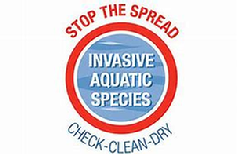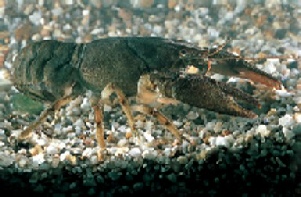

Biodiversity
Action
Plan
White-clawed Crayfish Conservation
The native White-clawed Crayfish is in severe decline in Barnsley and may be lost. However an attempt should be made.
Factors causing loss or decline
There are a number of reasons for the significant drop in the numbers of White-clawed Crayfish and their absence now from streams and water courses where they were previously.
- The invasive Signal Crayfish predate on and compete with White-clawed Crayfish. Signal Crayfish are the most widespread non-native crayfish, grow much larger than our native crayfish, are much more aggressive, and are able to produce more young.
- Crayfish plague has significantly reduced the numbers of White-clawed Crayfish. It is a disease caused by a fungus which is carried and spread by the Signal Crayfish although it does not affect them. Spores from the fungus can also be spread by water, fish and fishing gear.
- Habitat modification and management of water courses can also affect White-clawed Crayfish.
- Pollution, particularly incidents involving pesticides and sewage leakages into water courses, can wipe out entire populations of White-clawed Crayfish from local streams.
Legal protection
The white-clawed crayfish is listed in Appendix III of the Bern Convention and Annexes II and V of the ECD Habitats Directive. It is classed as globally threatened by IUCN/WCMC.
It is protected under Schedule 5 of the Wildlife and Countryside Act 1981 in respect of taking from the wild and sale. Updated in the Countryside and Rights of Way Act 2000.
Schedule 9 of this act makes it an offence to release into the wild, or allow to escape, all three species of non-native crayfish.
It is illegal to catch or handle native or non-native crayfish without a licence.
As a Section 41 species under the NERC Act (2006), White-clawed Crayfish need to be taken into consideration by any public body in managing their estate.
Links for further information
Buglife, supported by the Environment Agency, has a comprehensive information hub for the public and professionals:
Natural England: standing advice
Habitat requirements
White-clawed Crayfish require good water quality to support their prey – insect larvae and fish. They also feed on larger plants and detritus.
They benefit from gravel-bottomed or pebbled stream beds. They live under larger stones, in undermined, overhanging banks, amongst stonework, roots of woody vegetation, saturated logs and accumulations of fallen leaves.
Good practice in helping to conserve native crayfish populations
- Cleaning and disinfecting waterproof clothing, fishing tackle and water-sports equipment, to avoid the spread of crayfish plague.
- Maintaining or re-instating crayfish habitat wherever possible, including shaded areas and places to shelter.
- Avoiding causing any pollution, particularly incidents involving pesticides and sewage leakages into water courses.
- Providing ‘offline’, ‘ark’ refuges (ponds) to try to safeguard the native species.

White-clawed Crayfish
